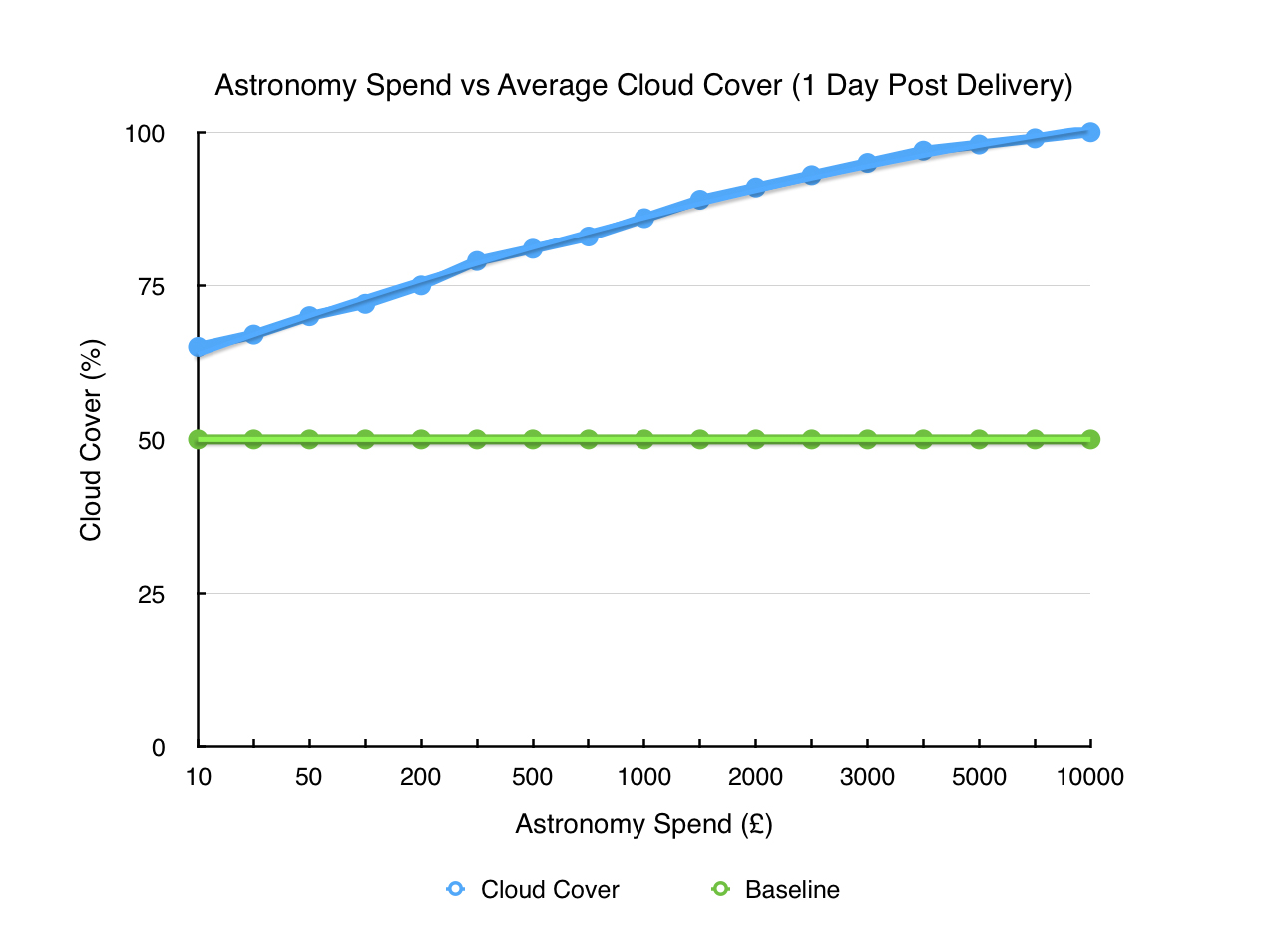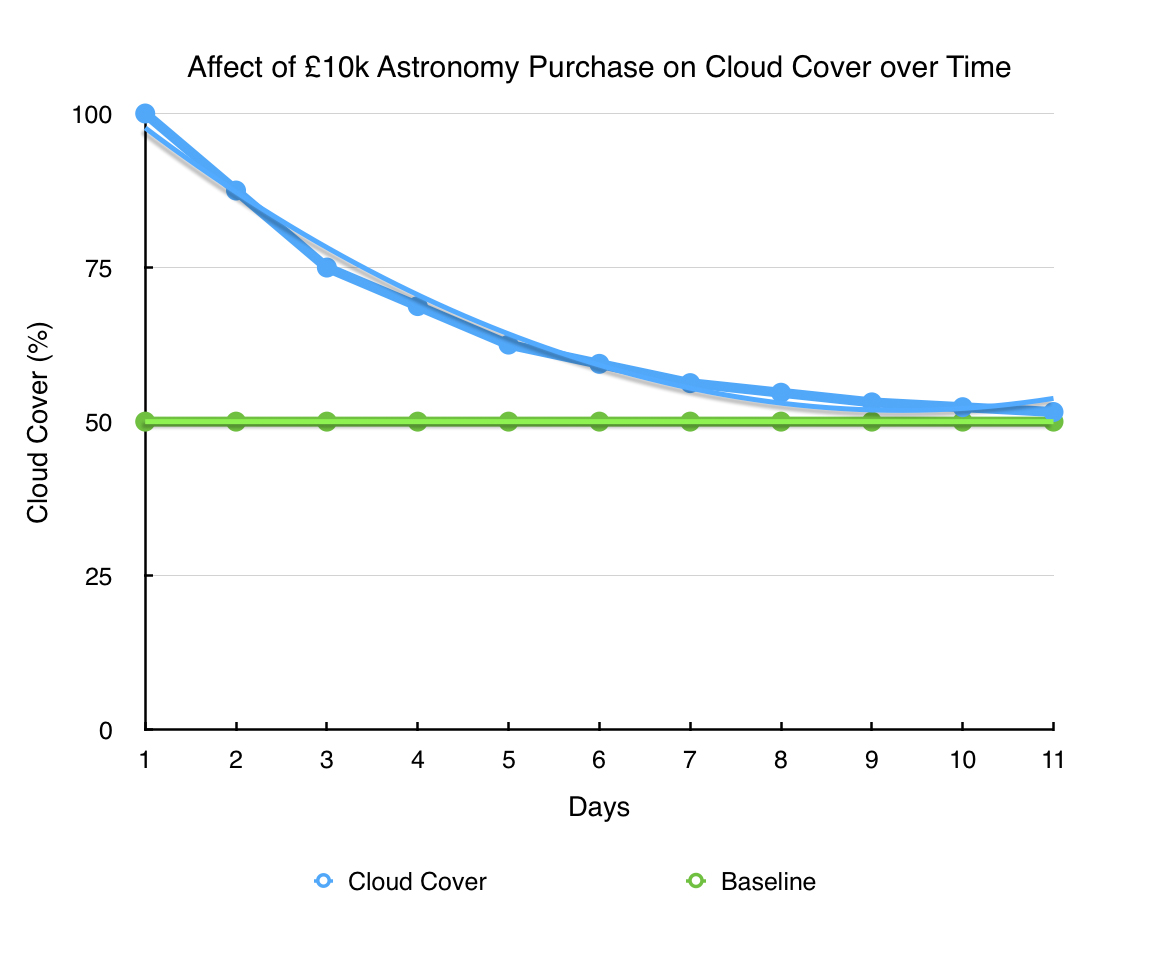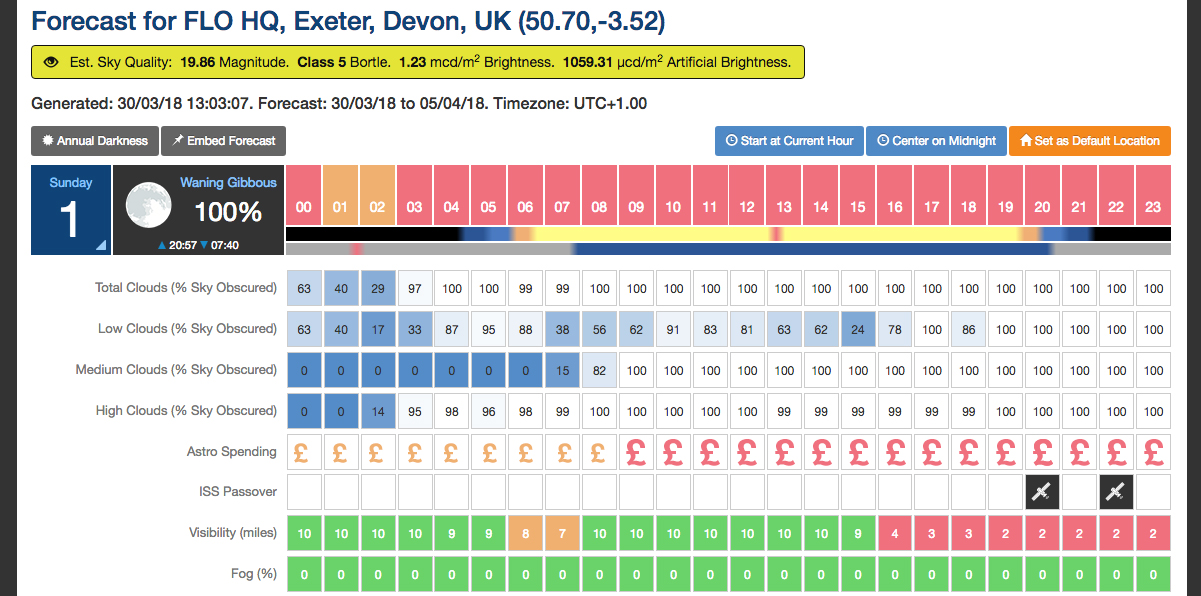Clear Outside - New Kit Paradox5 Comments1 April 2018 We have been putting 'May Contain Clouds' warning stickers on our boxes for some time. It started as a bit of fun but surprisingly our research consistently shows the warning is necessary! There is a clear correlation between buying new astronomy kit and cloud cover. We shall call it the 'New Kit Paradox'. Research ResultsHere are the results of our year long research cross referencing sales data with Clear Outside forecasts.
The affect diminishes over time following a 48 hour half-life pattern until cloud cover returns to baseline.
It typically takes up to 11 days for cloud cover levels to return to baseline based on a £10k astro purchase. Clear Outside ForecastsThe correlation is so clear we have decided to integrate our astronomy sales data into our Clear Outside forecasting models. We are developing an update for Clear Outside that will display the affects of nearby astronomy purchases, taking into account when the purchase was made, the size of the purchase and the distance from your location. An example of how the forecast will display:
The orange £ indicates a smaller purchase made locally a few days ago, it's affect diminishes until 09:00 when an EQ8 mount and Esprit telescope was delivered to a fellow astronomer nearby. Unfortunately the larger purchase has significantly reduced the likelihood of clear skies for days to come! Positive StepsWe will continue monitoring our deliveries of astronomy equipment and the affect they have on cloud cover to improve the accuracy of Clear Outside weather forecasts. Purchases made at FLO will automatically be integrated into Clear Outside weather forecasts and we are inviting other astronomy retailers to share their sales data with us. More sales data will further enhance the accuracy and usefulness of Clear Outside forecasts. If you belong to an astronomy society we recommend you discuss your purchase plans with other members, particularly around the time new products are launched, so purchases can be staggered over several days. Consider also placing any unusually large orders during the summer months when fellow astronomers are less likely to be observing. Working together we can reduce the 'New Kit Paradox' effect and enjoy more cloud free skies.
|
|








Congratulations to all at FLO’s R&D team for finally bringing some science to this much overlooked field. For too long, like other vital work trying to explain the working’s of the universe, it has been ridiculed as heresay or just an old wife’s tale. By properly understanding it, the astronomy community can finally make sure that we maximise our observing opportunities by co-ordinating kit purchases. For that we should be eternally grateful.
Stu
The Flat Earth Society
Its nice to see science backing up what we've all suspected. Perhaps if you lowered your prices we'd see a corresponding decrease in cloud cover. Just a thought.
Having bought several items from FLO this winter and having not having been able to image more then 8 hours in total I can indeed back up this theory. I therefore apologise in advance for other items I have on my wish list...
Could this be extended globally? Are affordable Chinese products to blame?
Back in the Halley/Hale-Bopp and in-between years, there were many more clear nights.
Thank you, this is great science.
Your long-awaited empirical research strongly supports the new 'Moistion' theory of cloud formation.
A 'Moistion' is a sub-atomic particle emitted from glass with a half-life estimated to be somewhere between 6 and 30 days (depending upon whether or not you adhere to the 'Basingstoke' interpretation of moistion generation theory). Moistions are only emitted by glass when in contact with air, so packaging leads to a build of moistions on the glass surface.
On opening the packaging encasing large pieces of glass, these moistion are release (the so-called moistion cascade). This sudden increase in moistion concentration reacts with raised Adrenalin in the blood caused by the excitement of opening a lovely new bit of kit to give produce the hormone 'Anticipatin' Aniticipatin is then excreted by the body in exhaled breath. Being much lighter than air, Anticipatin molecules rapidly float up into the upper atmosphere where they act as condensation nuclei, leading to cloud formation.
You can find out more in the frequently cited paper
Bunk, C., Tosh, A and Piffle, T. (2017). Mosition/Adrenalin interactions in higher primates - proposed stimulus for Anticatin production. Nature, 23. (2).